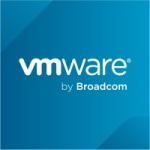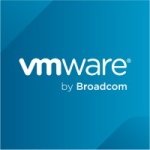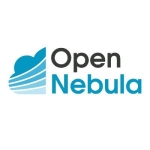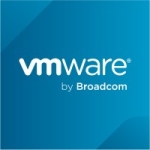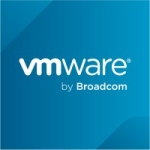What is our primary use case?
I've been using this for managing our company's infrastructure. We have a cluster of somewhere around six nodes.
We're using it in a hybrid mode. We have our on-premise data centers and we are operating on AWS as well. We have multiple legacy apps which require a certain type of monitoring to be enabled and we kept that enabled from the on-premise, but the advanced features for monitoring are being explored on AWS.
How has it helped my organization?
Primarily I have found it very useful from the compliance perspective and for control and agility. These are the three main things which are helping us to have a more proactive approach in managing the infrastructure.
We used to have COTS products for monitoring our ESXi hosts. We had a team that would check on alerts and then go on to our approach for remediating the problems. vROps has helped us to reduce the costs and increase the efficiency, because it has a lot of features that tell you where things are going wrong. We have been able to cut down on the cost of resources and we have a smaller team to manage the infrastructure now. The solution helped us to reach a level where we have low resources but high efficiency. Its gives you the most accurate alerts and remediation processes for closing problems.
We have a support operations center where we have a dashboard running 24/7 and that is where vROps manages things and tells us about the health of the infrastructure. If something is going wrong, if it picks up any anomalies, the team takes care of it, remediating based on the recommendation of vROps in the dashboard.
Since incorporating vRealize Operations over the last two years, I don't recollect there being a big concern in regards to downtime. We have not had any downtime happening in the last two years, since we put vROps in place. If we correlate it to the other models we were using earlier, we had certain incidents where we were not even aware of what was going on, on the ESX level. vROps has helped us to reduce our downtime by 90 percent. I'm taking the 10 percent off to account for planned maintenance, because sometimes we need to go offline for maintenance done for our entire infrastructure. But downtime has been reduced 90 or 95 percent since we incorporated vROps.
It has also increased our efficiency and decreased our mean time to resolution. Infrastructure agility has gone up and we're much more efficiently handling the infrastructure now, whether on-premise or Amazon. It provides the agility to do the deployments, but even then, deployment has to be initiated at a user level. Overall, it has increased our efficiency by 30 to 40 percent, in terms of deployment.
The solution has also played a very vital role in workload placements and we have been able to manage workloads and capacity planning, among other things, in a very efficient manner. We are 70 to 80 percent more efficient in regards to management and capacity planning. It gives you visibility into the infrastructure so that you never go beyond the sources that you have and it has helped increase our VM density by around 70 percent. In addition, performance has definitely increased by a similar rate of 70 to 75 percent compared to the previous product we used. There was a leap forward when we used vROps.
Regarding hardware costs, what we used to do before we had vRealize Operations was to buy things in chunks. If we needed storage or additional memory, we might procure 10 TB of storage at one go and then start using it, despite the fact that only 4 of the 10 TB was being used. That's how we would do hardware resource allocation: we would have to buy that item and put it into the system. But now, because of the visibility with vROps, we know how much storage we will require six months down the line. That means we do procurement in smaller chunks. We save hardware costs and, at the same time, resources are planned in such a way that we never run out of resources. Because we have six- or seven-node cluster, from the power perspective, we are not seeing that much in savings, but definitely due to the capacity planning and the visibility, we have seen a cost benefit.
What is most valuable?
There's a feature known as Smart Alerts in vRealize Operations, which I have found to be useful if there's anything going wrong in the infrastructure. What usually happens is that you get so many alerts that you become confused. Smart Alerts give you visibility into your infrastructure and also recommend how to fix the situation. That's a feature which I'm really a fan of.
Control, from the compliance perspective, is also helpful because we are a PCI DSS-certified company. It keeps us in compliance so that all of our servers and other things are not breaching any of the baseline protocols and baseline policies which we have laid down for the company. That's another thing which I like about the VMware vROps.
What needs improvement?
For the initial setup, there should be some sort of auto discovery of the environment. That should be enabled. It has the ability to discover a main node, but it could still be made easier, to reduce the initial configuration and setup time.
For how long have I used the solution?
We have been using VMware vRealize Operations (vROps) for the last two years.
What do I think about the stability of the solution?
After incorporating it during the initial phase, there was a discovery period for the infrastructure and for vROps to adopt our set of configurations and advanced policies. Since then, it has been pretty stable. We haven't had any issues.
What do I think about the scalability of the solution?
The scalability is fine. When we started using vROps, we only had a three-node cluster. Over the last two years, we have gone up to a six-node cluster. It is pretty scalable. The good part is that adding nodes to vRealize Ops is a pretty straightforward thing. It has given us the visibility to plan and to scale to the level we are at now.
We have over 3,000 people, out of an employee base of 10,000, using the apps that are running on the ESXi that is managed by vROps.
In terms of increasing our usage, as of now there are no plans because it widely depends on the expectations of the business. It's a global thing now because of COVID-19. We still don't know how we are going to grow this over time because the business is in a "back seat" right now. But I'm positive, down the line, of the possibility that we will go further with this.
How are customer service and technical support?
We have had a couple of cases where we have reached out to VMware support and the tech support has always been awesome from all perspectives. Their problem-solving attitude has always helped. We have been using VMware for seven to eight years now and we have gradually grown but support has been awesome during that time.
Which solution did I use previously and why did I switch?
In the past we used Paessler PRTG as well as other tools.
How was the initial setup?
The initial setup is straightforward, not complex.
Initially, because we were not familiar with vRealize Operations, it took us a while to get it set up. Our infrastructure is dependent on multiple volumes, ESX clusters and the storage. It took us seven to 10 days to have a fully functional deployment of the solution. The initial setup took us less time, but setting out and defining the policies, the baseline and advanced policies, happened within 15 days of the deployment.
What about the implementation team?
For deployment, we used a team of four onboard resources and we got in touch with local consultants who are VMware Certified partners for doing the deployment. The initial deployment was done by the certified partner and then a knowledge transfer to the resource team took place. After a month or two, our team was able to be 100 percent hands-on with it and started using it.
What other advice do I have?
I rate VMware vRealize Operations very highly because it gives you multiple features such as compliance, agility, and staying hybrid, although if you want you can do it on-prem or on the cloud. I would recommend it regardless of the deployment, whether it's on-prem or AWS or hybrid.
It is user-friendly, but it definitely requires a little tweaking in the environment when you're doing the installation to set it per your requirements, your infrastructure, and per your expectations. What are you trying to monitor? Once you're done with setting up vROps for your cluster or nodes, then it's very easy to use. It will really help you out to get to the stage of automation for your infrastructure, so you don't need to depend on manual processes at all.
We are not using Kubernetes or Tanzu as of now, but we are planning to incorporate it down the line, maybe in three to six months.
Overall, I would rate vROps as a nine out of 10. The one point I'm leaving out is because there is room for improvement, as I mentioned earlier.
Which deployment model are you using for this solution?
Hybrid Cloud
If public cloud, private cloud, or hybrid cloud, which cloud provider do you use?
Amazon Web Services (AWS)
Disclosure: My company does not have a business relationship with this vendor other than being a customer.









